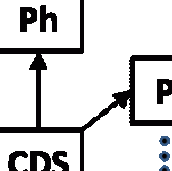 Last week we learned that 11 people were charged with the record-breaking $75 Million drug heist from the Eli Lilly warehouse in Enfield, Connecticut back in March of 2010 (see the excellent article by Jay Weaver in the Miami Herald, including a copy of one of the multiple indictments). Importantly, all of the stolen drugs from the Lilly warehouse were apparently recovered before they could be re-introduced into the legitimate supply chain. But this investigation and the charges go well beyond the infamous Lilly warehouse theft. They include other pharmaceutical, liquor, cigarette and cell phone cargo thefts around the country, allegedly perpetrated by members of the same criminal organization. Cracking this organization could end up disrupting the most prolific source of cargo theft in the United States over the last five years.
Last week we learned that 11 people were charged with the record-breaking $75 Million drug heist from the Eli Lilly warehouse in Enfield, Connecticut back in March of 2010 (see the excellent article by Jay Weaver in the Miami Herald, including a copy of one of the multiple indictments). Importantly, all of the stolen drugs from the Lilly warehouse were apparently recovered before they could be re-introduced into the legitimate supply chain. But this investigation and the charges go well beyond the infamous Lilly warehouse theft. They include other pharmaceutical, liquor, cigarette and cell phone cargo thefts around the country, allegedly perpetrated by members of the same criminal organization. Cracking this organization could end up disrupting the most prolific source of cargo theft in the United States over the last five years.
Congratulations are due to the law enforcement organizations who contributed to the investigation and to bringing the charges. They include DEA, ATF, FBI, U.S. Attorney of Florida, Miami-Dade Police Department, Florida Highway Patrol, U.S. Attorney of Illinois and U.S. Attorney of New Jersey.
This episode highlights one of the things I call the built-in protections of the U.S. pharmaceutical supply chain—the things that, combined, result in the U.S. having the safest supply chain in the world. In this case, it is strong and cooperative law enforcement organizations. While far from perfect, would you trade our system of justice, including law enforcement, with that of any other country in the world? I don’t think you would (unless you’re one of the Villa brothers or their associates!).
But what are the other components that result in the safest drug supply chain in the world? It’s certainly doesn’t occur by accident, so what are the built-in protections? Continue reading The Built-in Protections Of The U.S. Pharma Supply Chain →

 Everywhere I go lately I am asked “Do you think the California ePedigree dates will slip again?”. I don’t have any special or inside knowledge but, as usual, I do have a theory about that. I offer it to you here as one possible outcome. You can decide for yourself if you think it is dubious, merely plausible, fully probable, or somewhere in-between. Continue reading Will The California ePedigree Dates Slip Again?
Everywhere I go lately I am asked “Do you think the California ePedigree dates will slip again?”. I don’t have any special or inside knowledge but, as usual, I do have a theory about that. I offer it to you here as one possible outcome. You can decide for yourself if you think it is dubious, merely plausible, fully probable, or somewhere in-between. Continue reading Will The California ePedigree Dates Slip Again? 



 Understanding the concept of “Normal Distribution” is important in understanding the status of pedigree regulations in the United States pharmaceutical supply chain. The term itself didn’t exist back in the late 1980’s when the federal
Understanding the concept of “Normal Distribution” is important in understanding the status of pedigree regulations in the United States pharmaceutical supply chain. The term itself didn’t exist back in the late 1980’s when the federal